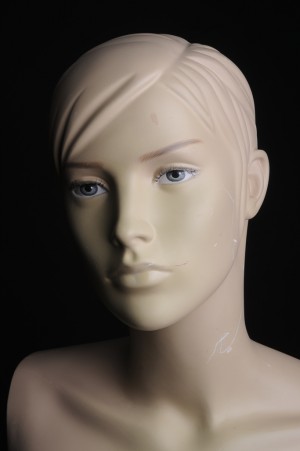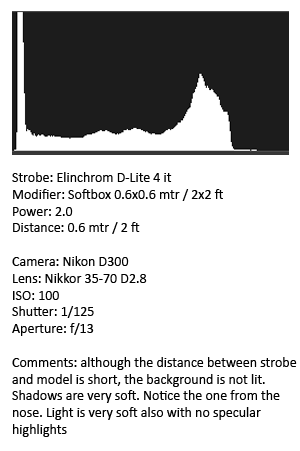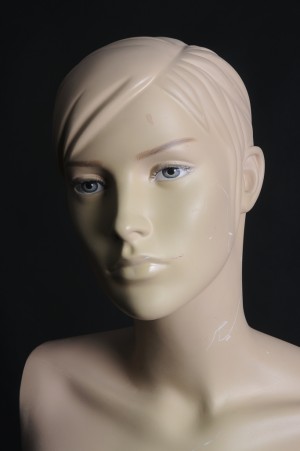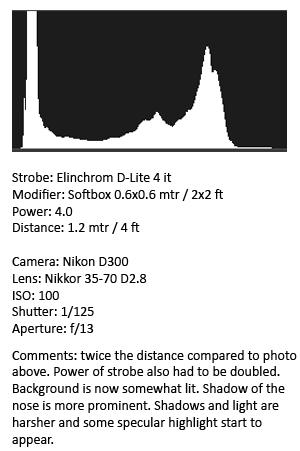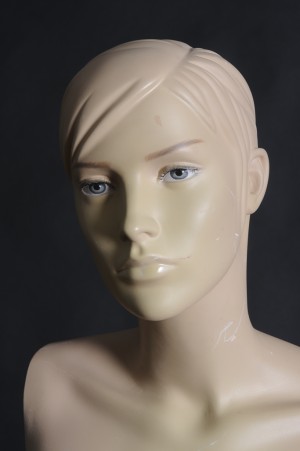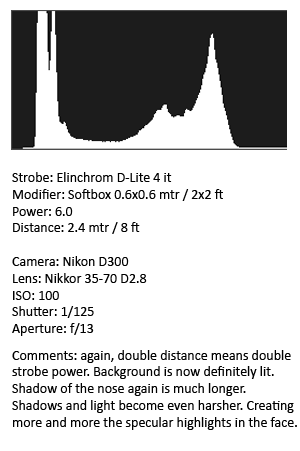And so the experimenting with the various lighting setups continues. Probably trillions of explanations and examples of the inverse square law can be found on the Web, but nevertheless I just wanted to add my own version. For no reason in particular, other than to be used as an excuse to play with my new girlfriend.
So what is this inverse square law all about? Well, in plain words it states that the longer the distance between model and light source is, the longer the light will travel behind the model. Kind of weird, when you think about it, because it means that the closer you bring the strobe to the model – and thus the closer you bring it to the background – the lesser it illuminates the background! So let’s see if we can prove this.
Here’s what I did. I made 3 marks on the studio floor. One at 0.6 mtr/2 ft from the model, then one at 1.2 mtr/4 ft, and then te last one at 2.4 mtr/8 ft. So doubling the distance between model and strobe each time. Here are the results with my comments on the right.
This little experiment tells us a number of things:
1. The bigger the distance between model end light source, the more the background is lit. The shorter the distance, the darker the background.
2. The bigger the distance, the longer and harsher become the shadows. The opposite is true if you make the distance shorter.
3. The bigger the distance, the more specular highlights you will see.
There is no right or wrong with this, though. As stated many times on this blog before, the distance you use in your portraits depends on what you want the image to articulate.
